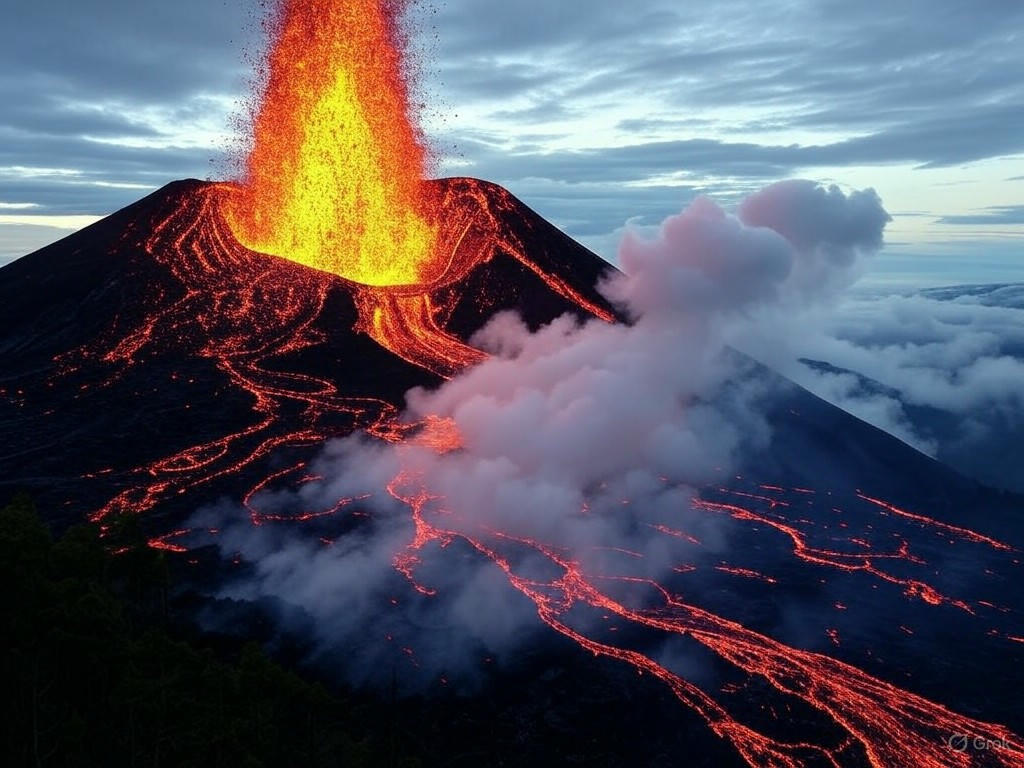Skyward Ice: How Volcanic Eruptions Paint the Heavens with Frost
Nature’s fury often unveils breathtaking mysteries, and recent scientific discoveries have illuminated one such wonder: volcanic eruptions crafting ice in the sky. High above Earth, satellites have captured a mesmerizing phenomenon where massive ash plumes from erupting volcanoes give rise to delicate, wispy clouds that transform into icy formations. This revelation not only deepens our understanding of atmospheric dynamics but also highlights the intricate dance between fire and frost in our planet’s upper reaches.
When a volcano erupts, it doesn’t just reshape the landscape below; it sends a powerful surge of particles and gases skyward. These plumes, laden with ash and water vapor, punch through the troposphere into the stratosphere, where temperatures plummet far below freezing. Scientists, using advanced satellite imagery, have now pieced together the puzzle of how these conditions conspire to create ice clouds. As the volcanic debris ascends, it carries moisture into these frigid heights. The tiny ash particles act as nuclei, providing a surface for water vapor to cling to and freeze, forming intricate ice crystals that shimmer in the thin air. This process, observed in real-time by orbiting instruments, paints a vivid picture of nature’s ability to turn chaos into ethereal beauty.
The implications of this discovery extend beyond mere aesthetics. These high-altitude ice clouds, often referred to as cirrus clouds, play a subtle yet significant role in Earth’s climate system. They can trap heat, contributing to a warming effect, or reflect sunlight, potentially cooling the planet. Understanding their formation through volcanic activity offers climatologists a new lens to predict how such natural events might influence weather patterns or long-term climate trends. Moreover, this research sheds light on aviation safety, as these clouds, sometimes invisible to the naked eye, pose risks to aircraft navigating near eruption zones. By mapping their creation, scientists hope to improve hazard warnings for pilots traversing these turbulent skies.
This breakthrough also underscores the power of modern technology in unraveling nature’s secrets. Satellites, equipped with cutting-edge sensors, have become humanity’s eyes in the sky, capturing data that ground-based observations could never achieve. The ability to monitor volcanic plumes and their icy offspring in near real-time marks a leap forward in geophysical research. It’s a reminder of how interconnected Earth’s systems are—how a fiery outburst in a remote corner of the world can ripple through the atmosphere, leaving a frosty signature thousands of miles away.
As we continue to probe these high-flying mysteries, the story of volcanic ice clouds serves as a testament to the planet’s ceaseless creativity. From the molten heart of a volcano to the frozen wisps of the stratosphere, this phenomenon bridges the extremes of heat and cold, chaos and calm. It’s a spectacle that not only captivates the imagination but also urges us to keep looking upward, where science and wonder collide in the vast canvas of the sky.


